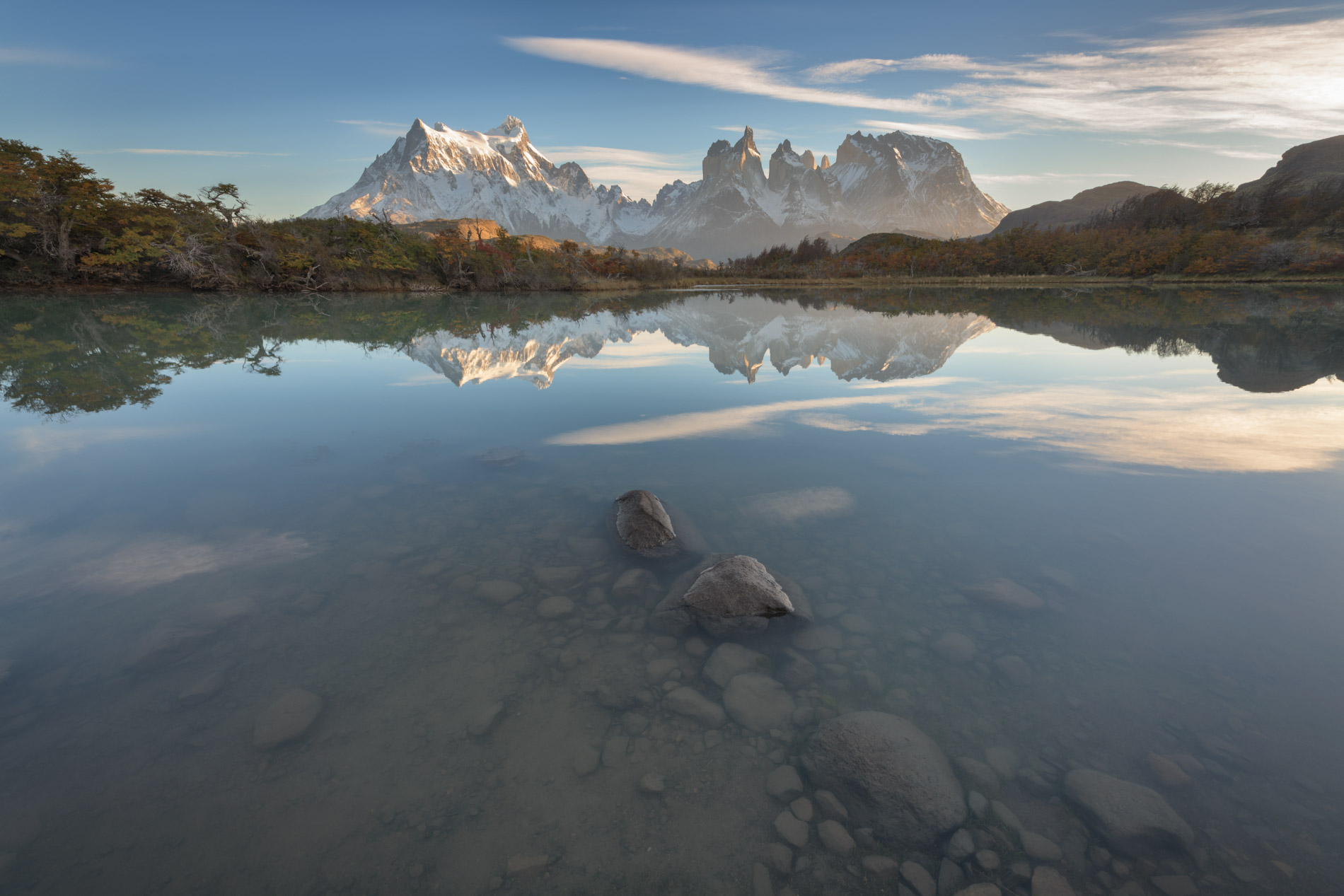Los Glaciares National Park, Argentina
Exploring incredible landscapes of Argentine Patagonia
24 Nov 2020 by Andrey Omelyanchuk
As a travel photographer, I’ve had the privilege of seeing some of the world’s most incredible sites, both natural and man-made. I spend much of the year traveling and have set up my tripod in far-flung locations around the world and on several continents. I’m happy to say that after years of living something of a nomadic lifestyle, the experience of seeing a place for the first time is as exhilarating to me now as it was when I began my career. Standing in breathless wonder at one of the world’s beautiful places is an experience that I never tire of.
But still…there are some places that are so special that they belong in some rarefied category of wonderment. This is the feeling I experience every time I visit Patagonia, the region that straddles the borders of Argentina and Chile, with the Andes Mountains bisecting it like a spine. Cleaved by otherworldly blue glaciers, it appears as a place out of time, a region untouched by humanity.

Rio de la Cascada, Fitz Roy, Los Glaciares National Park, Argentina
Lording over this ethereal landscape is Mount Fitzroy, a granite-walled behemoth that towers over the southern part of Patagonia. The Tehuelche, the ancient people who first made a home here, called the peak “Chaltén” or smoking mountain. It’s a fitting sobriquet; the highest peak in Los Glaciares National Park, Fitzroy is typically shrouded in a gauzy mist, appearing god-like and magisterial in the distance.

Fitz Roy, Cerro Torre, Los Glaciares National Park, Argentina
While Fitzroy is not the tallest peak in Argentina, it is nonetheless one of the most challenging for climbers and hikers and is considered the unofficial trekking capital of Argentina. It pierces the sky at more than 11,000 feet above sea level and while many adventurous souls are called to Fitzroy, only a handful of climbers have completed the ascent to its peak. One of those who summitted the imposing mountain was Yvon Chouinard, who would later use the image of Fitzroy’s peak as the emblem of his clothing brand, Patagonia.

Rio De las Vueltas, Fitz Roy and Cerro Torre, Argentina
Slicing through the frozen earth beneath Mount Fitzroy is the Rio de las Vueltas, which means “meandering river.” The emerald green river twists and turns through the landscape on its way to the sea, carving gorges through the icy landscape. Fueled by the water of melting glaciers, the river was born in the Lake of the Desert and descends—through innumerable turns and curves—to Lake Viedma, cutting through some of the continent’s most spectacular scenery along the way.
The river possesses a mercurial personality and your experience of it depends on your location along the river as well as the time of the year. At times and at certain places, it is glassy and calm. At another spot along its peregrinations, it becomes white-capped and unruly, beckoning hardy rafters and kayakers.

Rio de las Vueltas, Los Glaciares National Park, Argentina
Both Mount Fitzroy and the Rio de las Vueltas are part of Los Glaciares National Park, which must be one of the world’s most beautiful spaces. Covering the region known as the Austral Andes, the park was created in 1937 to preserve this remarkable region that is dominated by the expansive South Patagonian Ice Field, the largest ice field in the Southern Hemisphere after Antarctica. What makes this region such a singular wonder is that it is the only place on Earth where a glacier is actually increasing in size; while much of the world’s ice is melting, the incredible Perito Moreno glacier grows by up to six feet per day, even as towering icebergs break away from its face. The cleaving of massive icebergs away from the face of the glacier is a spectacular site, awe-inspiring and terrifying in equal measure. And unlike most of the world’s glaciers, those in Los Glaciares are far closer to sea level. In other parts of the world, glaciers tower at more than 2,500 meters above sea level. Those in the Argentinian part of Patagonia reach only 1,500 masl, and some are a scant 200 masl, making them far more accessible to visitors than their massive counterparts. Recognizing the highly unique nature of the area, in 1981, UNESCO named the park a World Heritage Site of Humanity.
This extraordinary landscape is the frozen remnant of the last great glacial age, which began some 100,000 years ago and reached its zenith 20,000 years ago. Exploring Los Glaciares National Park is, in a sense, stepping into another world, one submerged in ice and not yet fully the domain of humans. At nearly the end of the world, it is vast and imposing, a land of extremes that summons explorers and tourists alike, and those like myself, who simply want to spend some moments in wide-eyed amazement at the world.
View Los Glaciares galleryCategory
Related Posts
Login Required: Please login or create an account to post comments.



